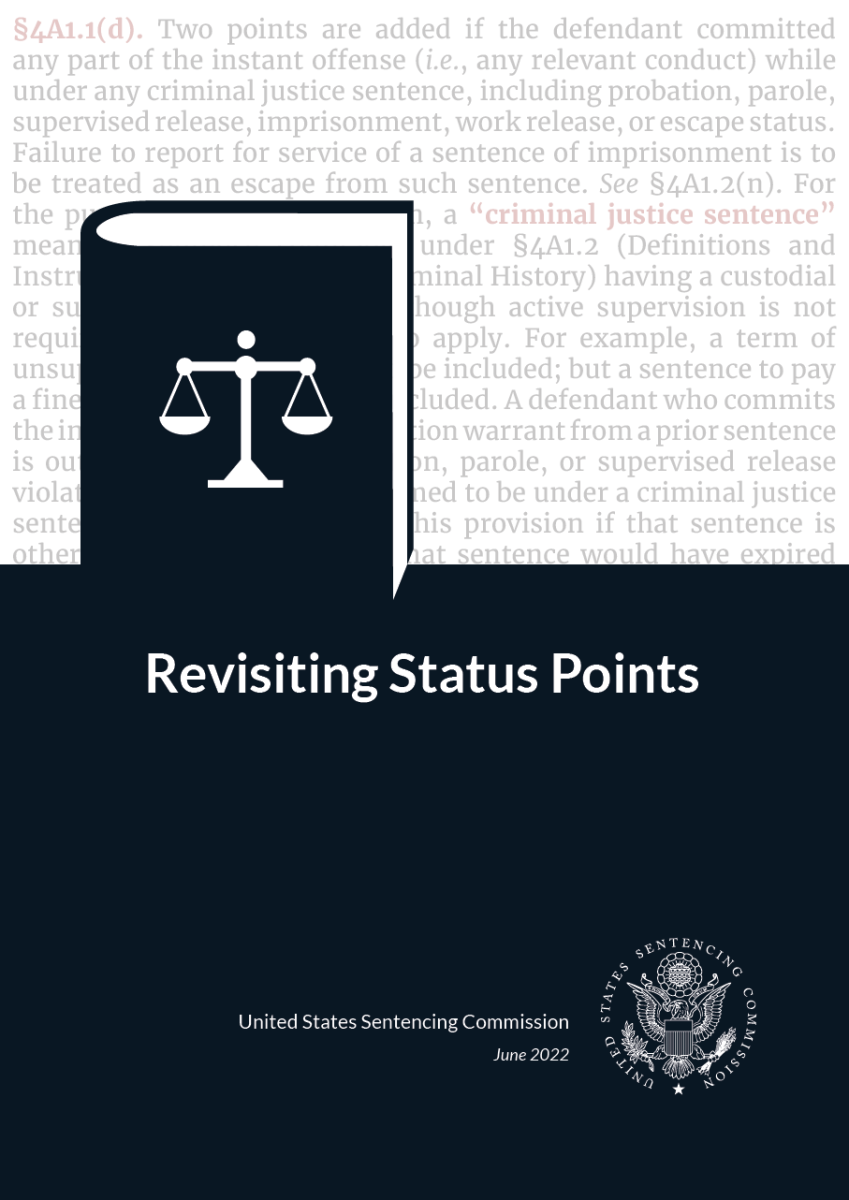Overview
(Published June 27, 2022) In 2005, the Commission examined status points (addressed in §4A1.1(d)) as part of a broader analysis of how well the guidelines’ criminal history computation predicts recidivism. This report revisits the examination of status points with greater focus, including a detailed analysis of their application and significance. The report begins by outlining how criminal history is calculated under the guidelines and by reviewing prior Commission research on the association between criminal history and recidivism. The report then examines how many offenders received status points in the last five fiscal years and compares them to offenders who did not receive status points. Next, the report analyzes the rearrest rates for offenders with and without status points who were released from prison or began a term of probation in 2010. Finally, the report considers how much status points contribute to the criminal history score’s prediction of rearrest.

Key Findings
In the last five fiscal years:
- Over one-third of federal offenders (37.5%) received two “status points” under §4A1.1(d) as part of their criminal history scores. For 61.5 percent of such offenders, the inclusion of the two points resulted in a higher Criminal History Category.
- The vast majority of offenders who received status points (92.6%) had criminal history scores that placed them in Criminal History Category III and higher, compared to a little less than half of offenders who did not receive status points (47.0%).
-
Offenders who received status points had an average of seven criminal history points for qualifying prior sentences (i.e., before adding in two status points). Offenders without status points had an average of five criminal history points for prior sentences, accounting for their total criminal history scores. Most offenders with status points (71.5%) would be in Criminal History Category III or higher based solely on their prior sentences.
Among offenders who were released in 2010:
- Those who received status points were rearrested at similar rates to those without status points who had the same criminal history score. For example, among offenders whose criminal history score was seven, 69.6 percent of those with status points and 70.4 percent of those without status points were rearrested in the eight years after release.
- Three-fifths (61.1%) of offenders who received status points had five or more criminal history points for prior sentences (i.e., before adding in two status points). These offenders had a statistically similar rearrest rate to offenders without status points who had the same number of points for prior sentences.
- The remaining two-fifths (38.9%) of offenders who received status points had one to four criminal history points for prior sentences (i.e., before adding in two status points). These offenders had a statistically higher rearrest rate than offenders without status points who had the same number of points for prior sentences.
- Status points only minimally improve the criminal history score’s successful prediction of rearrest—by 0.2 percent. With status points included in the calculation for eligible offenders, the score successfully predicts rearrest 65.1 percent of the time, compared to 64.9 percent of the time with status points removed.
